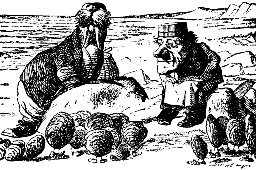
It's a very good place for emptying the brain, and letting idle thoughts develop.
But then, something disastrous happened to my happy empty island life. We got cellphones and the internet. I'm not much interested in porn (been there, done that) , too much interested in conspiracy theories, etc, so I fiddled around.
One day, fiddling about on the internet, (which has only been available in my home here for a year) I discovered a fascinating website, Numbers from 1 to 10 in Over 5000 Languages that listed numbers in most, if not all, the Austronesian languages.
The Austronesian language family is probably the largest on earth, with about 1200 languages, spoken from Madagascar to Easter Island, and from Hawaii to New Zealand, so there were a lot of them, and something very strange.
I had always thought that number names throughout this vast region were pretty standard, something like:
Proto-Austronesian+
*esa/isa *duSa *telu *Sepat *lima *enem *pitu *walu *Siwa *sa-puluq
That is, if I ever have the opportunity to buy something from an Easter Islander, a New Zealand Maori, a Sakalava from Madagascar, or a savage headhunter from the mountains of Taiwan, I would just say lima and get 5 of whatever I want.
Not quite so - but we'll get to that later.
Now we have to look at some technical linguistics stuff:
Proto-Austronesian is an artificial construct, derived from existing languages by tracing back words that look and mean the same (cognates), and studying the sound changes that have happened in the meantime, to group all the languages into one big family tree.
If you want to find out how professional linguists reconstruct these proto-languages, then look here. There (just to the right of the Austronesian language family tree) you'll see how it's done.
I'll discuss the flaws of the classical linguists' 'Comparative Method' and why it cannot apply to number systems, at a later date.
So Proto-Austronesian is at the very root of this family tree, and is said to be the ancestral language spoken by the very first speakers of a tongue that has now developed into about 1200 different languages.
Except that the majority of languages, roughly in the area East of the Wallace Line and West of Polynesia, had number systems and names that were distinctly unlike Proto-Austronesian, and couldn't possibly have been derived from it.
That part of the Austronesian world is right in the very middle of it; the bit coloured orange on the map, and the parts labelled New Guinea, Solomon Islands, and MELANESIA.
In the very middle of that area is the very place that another ancestral language, Proto-Oceanic, is considered to have developed. You can find a bit more about this proto-language here.
As I began to look at these number lists, I could see that many of the systems were in various stages of development, from a very basic: one, two, few, and many, through various methods of tallying fingers and hands, and even toes and feet, right up to the standard symbolic numbers that appear to have arrived, fully-formed and complete, in Proto-Austronesian, supposedly ancestor of them all.
Even now, the word for 5 in most Austronesian languages is lima, or something very like it, which also means, simply: hand.
In English, we don't have the same connections between number-names and the original counting methods; you can't trace five back to anything very much, except a Proto-Indo-European *penkwe, which doesn't tell you anything very much.
But you can see the family resemblances between Indo-European languages, from:
Proto-Indo- European+ *oynos / *sem, *duwo:, *treyes, *kwetwores, *penkwe,
*sweks, *septm, *okto:, *newn, *dekm.
Developing into some long-dead languages, that, thankfully, were written down:
Sanskrit+ éka, dvá, trí, catúr, páñca, s.as., saptá, as.tá, náva, dáça.
Classical Greek+ hei:s, dúo:, trei:s, téttares, pénte, héx, heptá, októ:, ennéa, déka.
Latin+ u:nus, duo, tre:s, quattuor, quinque, sex, septem, octo:, novem, decem.
Through a reconstructed 'ancestor' of the Germanic branch, that led to Modern English:
Old Germanic+ *ainaz, *twai, *thrijiz, *fithwor, *fimfi, *seks, *sibum, *ahto:, *niwun, *tehun.
Old English+ án, twá, þrí, féower, fíf, sex, seofon, eahta, nighon, tíen.
Middle English+ an, two, three, four, fif, six, seven, eihte, nien, ten.
Modern English one, two, three, four, five, six, seven, eight, nine, ten.
And another, still spoken, from a different branch of the Indo-European family, Celtic:
Welsh un, dau, tri, pedwar, pump, chwech, saith, wyth, naw, deg.
And a few more you might never have suspected had any relationship with English:
Hindi/ Urdu ek, do, ti:n, ca:r, pã:c, chai, sa:t, a:th, nau, das.
Farsi (Persian) yak, do, se, chaha:r, panj, shesh, haft, hasht, noh, dah.
Polish jeden, dwa, trzy, cztery, pie,c', szes'c', siedem, osiem, dziewie c', dziesiec'.
Syrian Gypsy e:kâ, di:, târân, shta:r, panj, sha:s, h.o:t, h.aisht, na:, da:s.
Pashto (Afghan) yaw, dwa, dre, tsalór, pindzé, shpag, owé, até, ne, les.
Sinhalese eka, deka, tuna, hatara, paha, haya, hata, ata, namaya, dahaya.
Vedda ekamay, dekamay, tunamay, hataramay, pahamay, pahamay tava ekamay,
pahamay dekamay, pahamay tunamay, pahamay hataramay,
pahamay tava pahamay
By now, you're probably going a bit goggle-eyed over numbers lists, but take another look at the last one.
Vedda is a language spoken by a very primitive negrito tribe in Sri Lanka, and up to five, their system is the same as the Sinhalese spoken throughout Sri Lanka, except that they add may to each number, for some unknown reason.
After five, things go a bit haywire. If you look a bit more closely, you' ll see that the pattern goes:
Six = 5+1
Seven = 5+2
Eight = 5+3
Nine = 5+4
Ten = 5+5
The Vedda counting system is the only one of its type in the whole long list of 265 different Indo-European number systems listed here.
All the rest have quite normal symbolic words.
The Vedda system, though, shows all the signs of being, not so very long ago, one that was counted on the fingers of one hand, and then on the other, repeating the same 'early number names' from 1 to 5.
But among Austronesian languages, fully 20% have such 'primitive' numbering systems. That is what first sparked my interest.
Maisin, an Austronesian language spoken on the Eastern coast of Papua New Guinea, has numbers that go:
sesei, sandi, sinati, fusese, fakete, faketi-tarosi-taure-sesei,
faketi-tarosi-taure-sandi, faketi tarosi taure sinati,
faketi tarosi taure fusese, faketi tau tau
How could those numbers possibly be descended from an ancestral Proto-Austronesian:
*esa/isa *duSa *telu *Sepat *lima *enem *pitu *walu *Siwa *sa-puluq ?
Why would anyone want to dump a simple number system like that in favour of something so cumbersome? And what did the words mean, anyway?
Why would the migrating Austronesians, supposedly coming from Taiwan (according to the most acceptable current theory on their origins) give their languages to coastal New Guinea natives, but not their simple numbers? After all, they are generally thought to have been sea-borne traders who brought a superior (and possibly whiter) culture to the poor benighted blackies (Melanesia means Black Islands) of New Guinea.
So I decided to try and find out the answers to these questions, and, in so doing, found out quite a lot about numbering, and wandered down side roads into cul-de-sacs, but also found out a great deal about some quite unrelated things, just like:
"The time has come," the Walrus said,
"To talk of many things:
Of shoes--and ships--and sealing-wax--
Of cabbages--and kings--
And why the sea is boiling hot--
And whether pigs have wings."
So, in blogs to come, I'll wander off topic to discuss shoes, ships, sealing wax, cabbages (actually, taro), kings, when the sea is boiling hot (not quite, but it looks like it), and, if pigs didn't have wings, then how in hell did they get to some of those tiny Pacific islands?
And, if those wonderful noble savages of the Pacific islands, so celebrated by Rodgers and Hammerstein, and almost everyone who's met them before or since, had hit on Mauritius on their way to Madagascar, would we have had our very favourite extinct bird, the Dodo, to remember?


